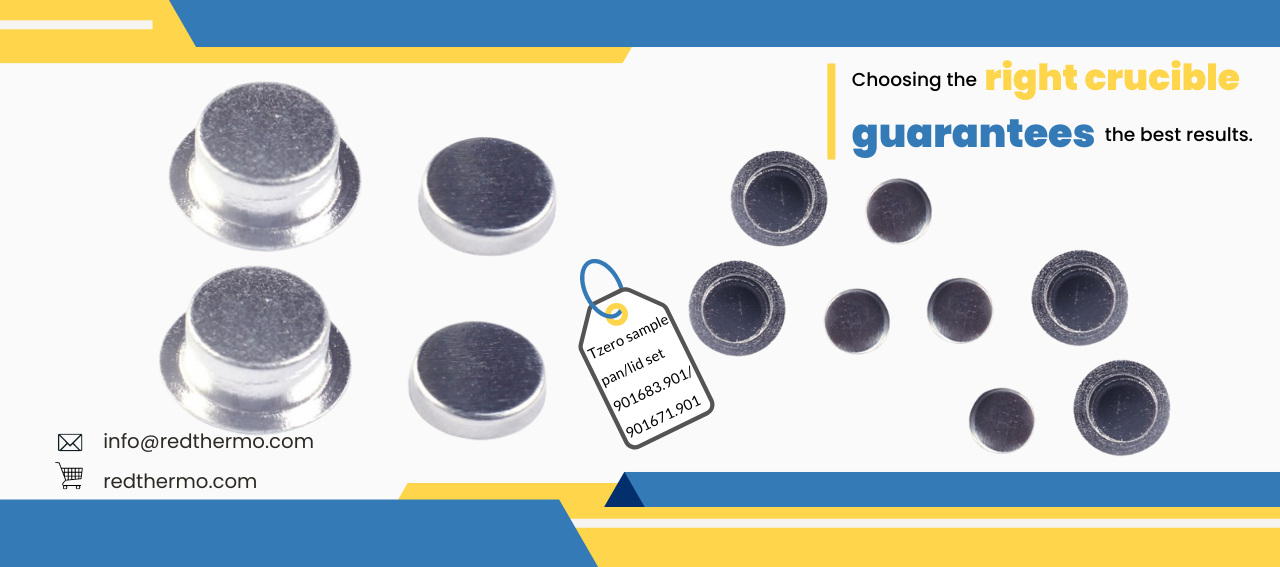Your cart is empty.
shop now
Your cart is empty.
shop now
Table of Contents
1. Understanding the Importance of Sample Containment | 2. Choosing High-Quality Aluminum Pans and Lids |
3. Proper Preparation of Aluminum Pans and Lids | 4. Ensuring Secure Sealing |
5. Minimizing Sample Volume | 6. Handling and Loading Samples Carefully |
7. Conducting Regular System Checks | 8. Calibrating and Validating the DSC Instrument |
9. Performing Test Runs and Optimizing Conditions | 10. Troubleshooting Sample Leakage Issues |
11. Cleaning and Maintaining Aluminum Pans and Lids | 12. Common Mistakes to Avoid |
13. Advantages and Limitations of Aluminum Pans and Lids | 14. Conclusion |
15. Frequently Asked Questions (FAQs) |
Sample containment is crucial in DSC analysis to prevent leakage and ensure accurate measurements. Leaking samples can lead to false data, affecting the interpretation of thermal behaviour and phase transitions. Proper handling and sealing techniques are essential to maintain the integrity of the experiment.
To minimize the risk of sample leakage, it is vital to select high-quality aluminum pans and lids designed explicitly for DSC analysis. These pans and lids should have excellent sealing properties, ensuring a tight and reliable closure.
Before conducting DSC experiments, it is essential to prepare the aluminum pans and lids appropriately. Thoroughly clean and dry them to remove any contaminants or residues that could interfere with the sealing process. Check for any defects or damage in the pans or lids that could compromise their integrity.

To prevent sample leakage, it is crucial to ensure a secure seal between the aluminum pan and lid. Gently press the lid onto the pan, ensuring no gaps or spaces. Apply even pressure around the edges to create a tight seal to withstand the temperature and pressure changes during the analysis.
.png)
Reducing the sample volume can help minimize the risk of sample leakage. Overfilling the aluminum pan can cause the sample to spill or leak during heating. Follow the manufacturer's guidelines and recommendations for the appropriate sample volume based on the pan's size and design.
Proper handling and loading of samples into the aluminum pans are critical to prevent leakage. Avoid any sudden movements or excessive force that could disrupt the seal. Use appropriate tools, such as pipettes or spatulas, to transfer the sample into the pan carefully.
Regular system checks are essential to identify and address potential issues that could lead to sample leakage. Inspect the DSC instrument for signs of wear or damage, including the pans, lids, and sealing mechanisms. Calibrate the instrument regularly to ensure accurate measurements and reliable results.
Calibration and validation of the DSC instrument are crucial to maintain the accuracy and reliability of the analysis. Follow the manufacturer's instructions for calibrating the instrument, including temperature and enthalpy calibration. Validate the instrument periodically using known standards to verify its performance.
Before conducting actual experiments, it is advisable to perform test runs to optimize the DSC conditions. This allows you to identify potential sample leakage issues and make necessary adjustments to the experimental parameters, such as heating rates or atmospheric conditions.
If sample leakage issues persist, troubleshooting steps can help identify and resolve the problem. Check the pan and lid for defects, ensure proper sealing techniques, and consider alternative sample containment methods if necessary. Consult the instrument manufacturer or experienced researchers for further guidance.
Regular cleaning and maintenance of aluminum pans and lids are essential for their longevity and performance. After each experiment, clean the pans and lids thoroughly with suitable solvents or cleaning agents to remove any residues. Inspect them for any signs of wear or damage and replace them as necessary.
Avoiding common mistakes can significantly reduce the risk of sample leakage in DSC analysis. Some common mistakes include overfilling the pan, improper sealing techniques, using damaged or worn-out pans and lids, and neglecting regular instrument maintenance. Stay vigilant and follow best practices to ensure reliable results.
While aluminum pans and lids are commonly used in DSC analysis, it is essential to understand their advantages and limitations. Aluminum pans and lids are cost-effective, readily available, and provide good thermal conductivity. However, they may be limited in certain applications requiring specific materials or sealing techniques.
Preventing sample leakage is crucial for accurate and reliable DSC analysis using aluminum pans and lids. Researchers can minimize the risk of sample leakage and obtain high-quality data by following proper techniques for sample containment, sealing, and instrument maintenance. Attention to detail and adherence to best practices ensure the integrity of DSC experiments and enhance the validity of the results.
Yes, aluminum pans and lids can be reused for DSC analysis. However, it is important to clean them thoroughly after each experiment to remove any residues that could interfere with subsequent analyses. Inspect the pans and lids for signs of wear or damage and replace them if necessary.
Several alternatives to aluminum pans and lids in DSC analysis include stainless steel pans, ceramic crucibles, and hermetically sealed capsules. The choice of alternative materials depends on the specific requirements of the experiment, such as temperature range, sample compatibility, and sealing capabilities.
.png)
If you encounter sample leakage issues in DSC analysis, first check the pan and lid for defects or damage. Ensure proper sealing techniques and consider reducing the sample volume. If problems persist, consult the instrument manufacturer or experienced researchers for further troubleshooting guidance.
Yes, sample leakage can affect DSC analysis results. Leaking samples can lead to inaccurate measurements, affecting the interpretation of thermal behavior and phase transitions. It is vital to prevent sample leakage to obtain reliable data and meaningful results.
Yes, specialized pans and lids are available for specific DSC analysis applications. For experiments that require unique conditions or sample types, such as high-pressure or corrosive environments, specialized pans, and lids made from appropriate materials can be used to ensure sample containment and accurate analysis.